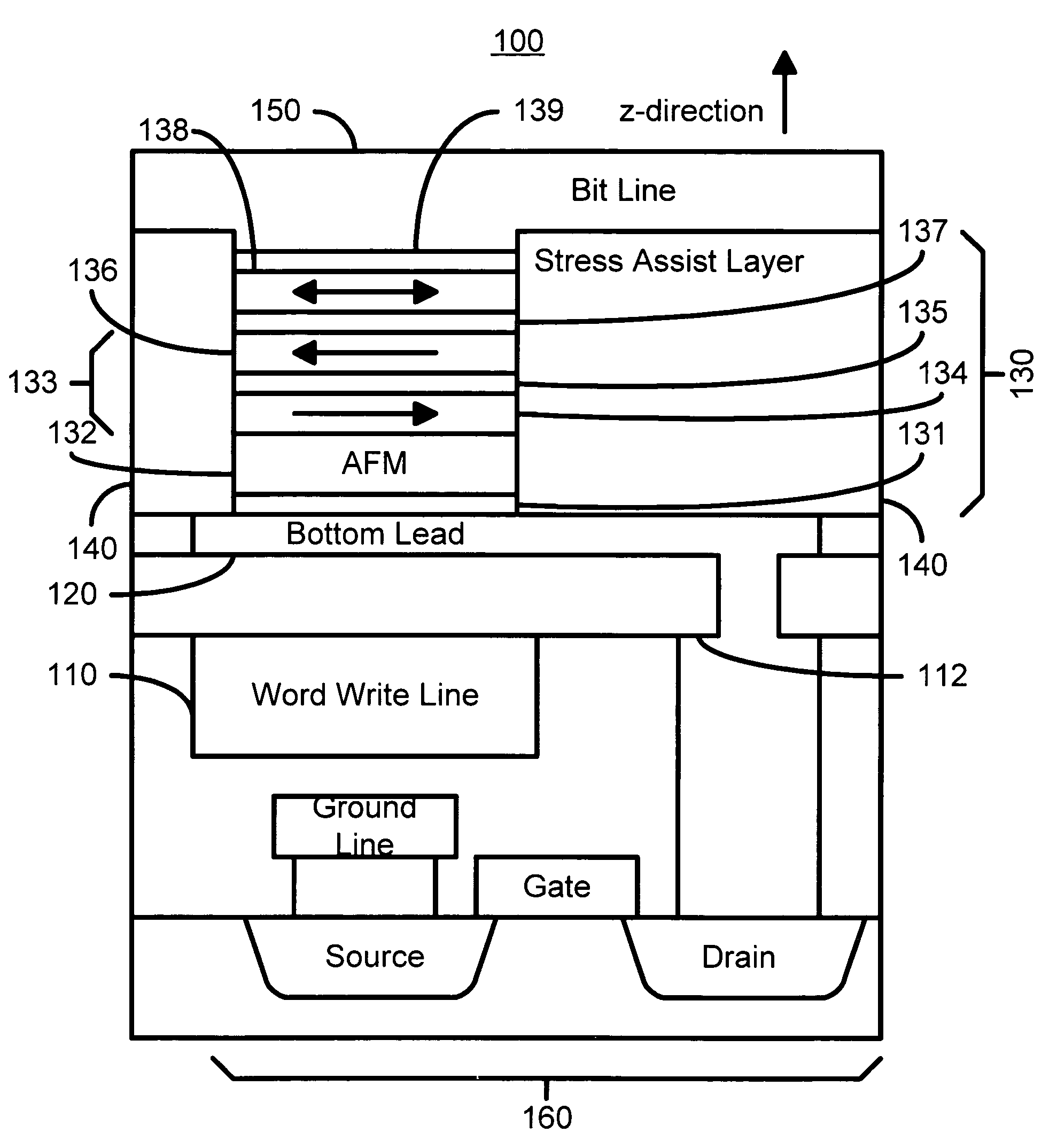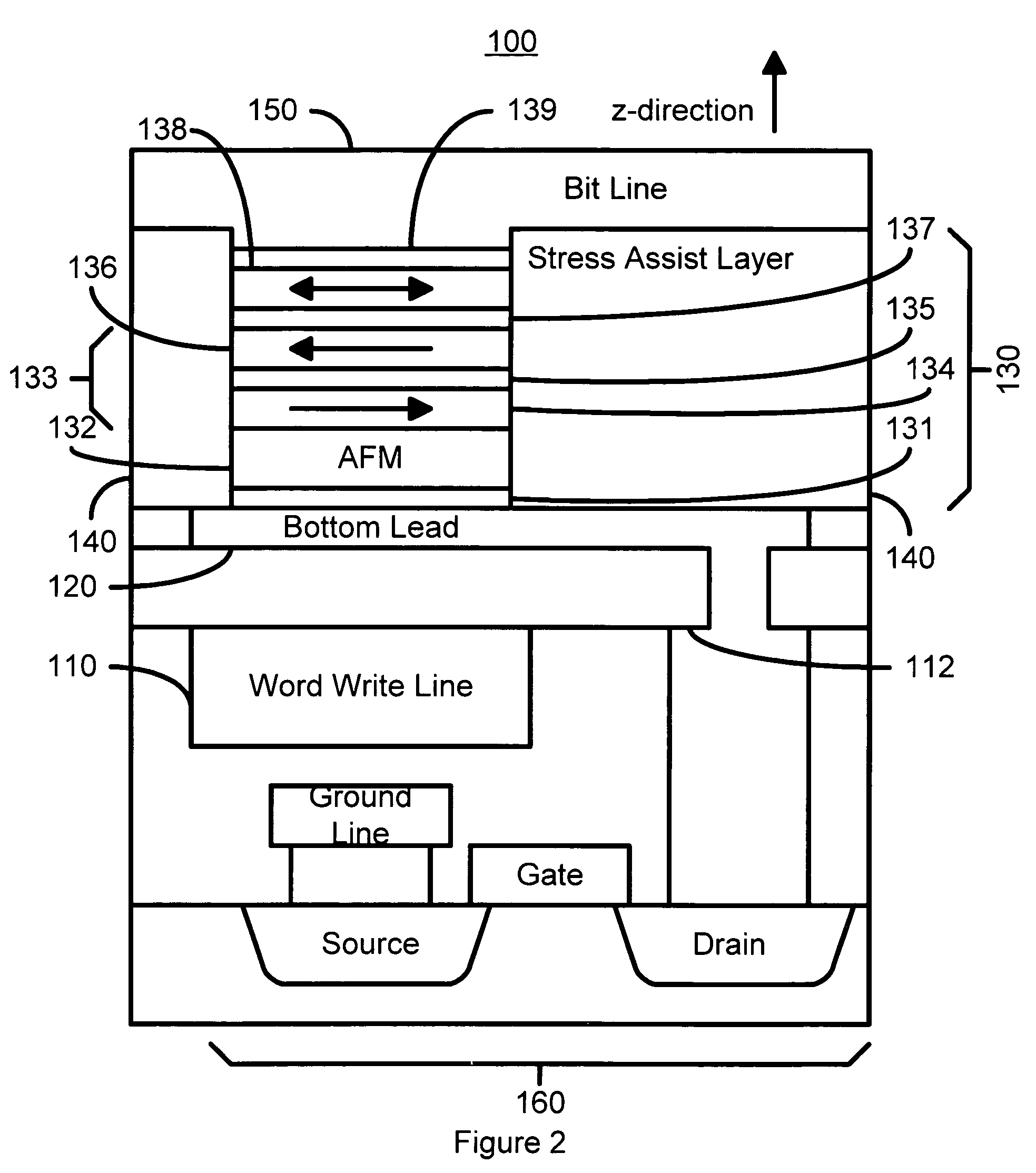Stress assisted current driven switching for magnetic memory applications
a magnetic memory and current driving technology, applied in the field of magnetic memory systems, can solve the problems of high switching current and difficulty in switching at low current for magnetic memory applications, and achieve the effect of avoiding high switching current and reducing the number of applications
- Summary
- Abstract
- Description
- Claims
- Application Information
AI Technical Summary
Benefits of technology
Problems solved by technology
Method used
Image
Examples
second embodiment
[0043]FIG. 3 is a diagram depicting a portion of a magnetic memory 100′ utilizing stress-assisted switching in accordance with the present invention. The magnetic memory 100′ is analogous to the magnetic memory 100 depicted in FIG. 2. Consequently, components of the magnetic memory 100′ are labeled in an analogous manner. In addition, the materials used for the components of the memory 100′ are preferably the same as for analogous components in the memory 100. However, note that the layer 137′ can be either a barrier layer or a conducting spacer layer, for example made of Cu. Thus, the magnetic element 130′ is preferably either a spin tunneling junction or a spin valve. Note, however, that in an alternate embodiment, other structures could be use for the magnetic element 130′. In addition, the stress-assist layer 140′ is placed below the bottom lead 120′. However, the stress-assist layer 140′ still has the same function. Thus, the stress-assist layer 140′ still causes the magnetic e...
first embodiment
[0046]FIG. 4A is a diagram depicting an alternate switching element 200 in a magnetic element for a magnetic memory utilizing stress assisted switching in accordance with the present invention. The alternate element 200 could replace certain layers in the magnetic element 130 or 130′ including the free layer 138 or 138′, respectively. Thus free layer 202 of magnetic element 200 would be on top of layers 137 or 137′ in the magnetic element 130 or 130′, respectively. The alternate switching element 200 includes a ferromagnetic layer 202, a separation layer 204, a second ferromagnetic layer 206, a spacer layer 208, a pinned layer 210, and an AFM layer 218. The pinned layer 210 is preferably synthetic and, therefore, includes ferromagnetic layers 212 and 216 separated by a nonmagnetic layer 214. The free layer 206 preferably includes materials such as those used for the free layer 138 or 138′. The separation layer 204 preferably includes Cu or CuPt. The separation layer is used to allow...
PUM
 Login to View More
Login to View More Abstract
Description
Claims
Application Information
 Login to View More
Login to View More - R&D
- Intellectual Property
- Life Sciences
- Materials
- Tech Scout
- Unparalleled Data Quality
- Higher Quality Content
- 60% Fewer Hallucinations
Browse by: Latest US Patents, China's latest patents, Technical Efficacy Thesaurus, Application Domain, Technology Topic, Popular Technical Reports.
© 2025 PatSnap. All rights reserved.Legal|Privacy policy|Modern Slavery Act Transparency Statement|Sitemap|About US| Contact US: help@patsnap.com



